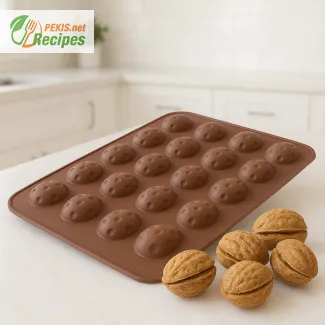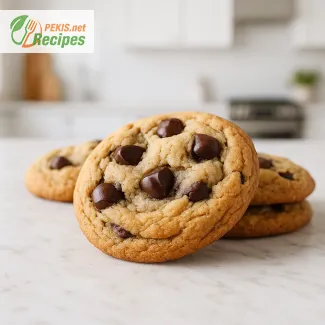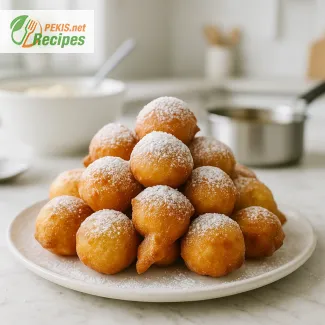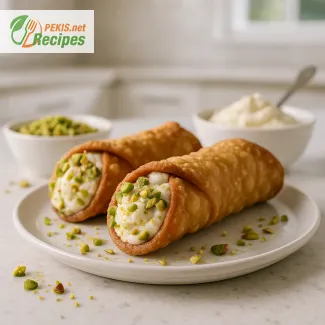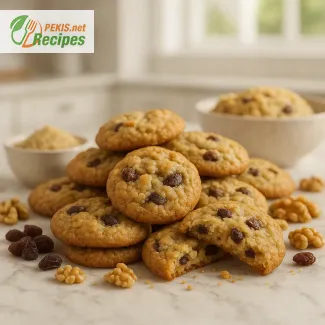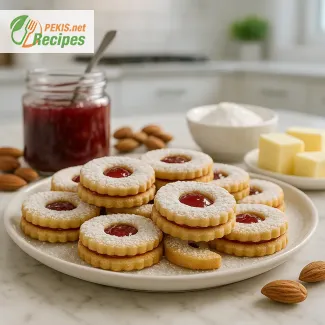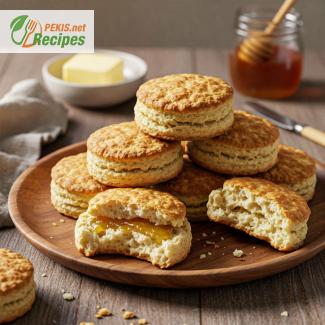
Fluffy Southern-Style Biscuits with Buttermilk Perfection
Discover the comforting taste of homemade buttermilk biscuits from scratch
Few things rival the irresistible charm of a freshly baked buttermilk biscuit, golden and flaky on the outside, tender and pillowy on the inside. Whether served warm with a pat of melting butter, smothered in rich sausage gravy, or paired with jam for a sweet morning indulgence, these biscuits offer a nostalgic taste of Southern tradition. This easy homemade buttermilk biscuit recipe captures everything you love about traditional baking — comfort, simplicity, and flavor — all made with just a few pantry staples and a love for home cooking.
These biscuits aren’t just any quick bread. They are a celebration of rustic flavor, a go-to side dish that elevates breakfast spreads, brunch tables, and dinner feasts alike. What makes them truly stand out is their signature tang from real buttermilk, balanced with the delicate richness of cold butter folded into every layer. The result is a tender, flavorful biscuit that’s deeply satisfying and endlessly versatile.
In today’s fast-paced world, more home cooks are rediscovering the joy of from-scratch baking, and there’s no better place to start than with this timeless classic. You don’t need advanced skills, special tools, or hours of time — just a mixing bowl, a gentle touch, and a hot oven. This guide brings everything together for you: the best techniques for layering dough, tips for achieving the perfect rise, and suggestions for storing or freezing leftovers.
The beauty of a well-made buttermilk biscuit lies in its simplicity, yet the technique behind its flakiness and structure is an art in itself. When butter is cold and properly cut into flour, it creates tiny pockets that release steam in the oven, resulting in those coveted airy layers. Combine that with the acidity of buttermilk — which not only adds flavor but also reacts with baking soda for added lift — and you’ve got a classic quick bread that feels anything but basic.
Pair these biscuits with nearly any dish and watch them become the star of the table. They're perfect alongside creamy soups, crispy fried chicken, or sunny-side-up eggs. They also shine as a base for breakfast sandwiches or topped with honey and sea salt for a sweet-and-savory twist.
But beyond their flavor, there’s something deeply comforting about the process of making them. Measuring the flour, cutting in the butter, gently folding the dough — it’s a reminder of simpler times, of generations who passed down their favorite recipes through flour-dusted notebooks and family stories. It’s about more than eating — it’s about connection.
Even if you’ve never made biscuits before, this recipe will guide you every step of the way. With the right ingredients and a few expert tips, you’ll create biscuits with tall, fluffy centers and beautifully crisp edges, all baked to golden perfection. They’ll rise in the oven like little towers of buttery joy, making your kitchen smell like a bakery and filling your home with warmth.
For those new to baking, or even seasoned cooks looking to perfect their biscuit game, we’ll dive into the key techniques that make all the difference — from using cold butter and a light hand to cutting and layering for structure. You’ll also find helpful advice on how to avoid common biscuit pitfalls, such as overmixing or flattening the dough too much.
This recipe isn’t just about making biscuits — it’s about building memories, sharing meals, and celebrating the everyday magic of baking from scratch. So tie on your apron, preheat your oven, and get ready to experience the unmatched joy of a freshly baked buttermilk biscuit that’s crispy, tender, and impossibly delicious.
In the sections that follow, we’ll walk through everything you need to make this recipe a success — from the precise ingredient measurements to the perfect folding technique. Whether you're baking for a holiday brunch, a cozy Sunday breakfast, or simply craving something hearty and homemade, these easy buttermilk biscuits will become your go-to recipe again and again.
- Preheat your oven to 220°C (425°F) and line a baking tray with parchment paper.
- In a large mixing bowl, whisk together all-purpose flour, baking powder, baking soda, and salt.
- Add the cold, diced butter into the flour mixture. Using a pastry cutter or your fingers, cut the butter into the flour until the mixture resembles coarse crumbs.
- Pour in the cold buttermilk and stir gently with a wooden spoon or spatula until just combined. Do not overmix.
- Turn the dough onto a lightly floured surface. Gently pat the dough into a rectangle about 2 cm (¾ inch) thick.
- Fold the dough into thirds (like a letter), rotate 90 degrees, and pat down again. Repeat the folding process two more times. This creates layers.
- Pat the dough out to about 2.5 cm (1 inch) thick and use a floured biscuit cutter (about 6 cm / 2.5 inch diameter) to cut out biscuits. Press straight down without twisting.
- Place the biscuits close together on the prepared tray for soft sides or spaced apart for crispier edges.
- Optional: Brush the tops with melted butter for a golden finish.
- Bake in the preheated oven for 13–15 minutes or until the tops are golden brown.
- Remove from the oven and allow to cool for a few minutes. Serve warm.
Elevating Your Buttermilk Biscuit Game: Tips for a Fluffier, Tastier Result
Master every layer with expert adjustments to enhance texture, flavor, and nutrition
Homemade buttermilk biscuits hold a special place in the hearts of comfort food lovers. While the traditional recipe is a solid foundation, there’s always room for improvement — whether it’s enhancing flavor, texture, or nutritional value. By experimenting with a few thoughtful modifications, you can customize your biscuits to better suit your preferences, dietary needs, or meal context. Below, we explore the best ways to transform the classic recipe into something even more spectacular.
Improving texture through butter techniques
One of the most defining features of a great biscuit is its flaky, tender texture. The secret to achieving this lies in how you handle the butter. While the base recipe calls for cold diced butter, some bakers prefer grating frozen butter directly into the flour. This creates even distribution and helps form those delicate, layered pockets of steam during baking.
For an even richer flavor and a crisper edge, try substituting a portion of the butter with cold lard or vegetable shortening. This tweak results in a biscuit with crumblier edges while maintaining a moist interior. If you're after an ultra-light texture, you can also sift the flour twice before starting. This introduces more air into the dough, leading to a more pillowy crumb.
Adding flavor with mix-ins and toppings
While the classic buttermilk biscuit is delicious on its own, it’s also the perfect canvas for added flavor depth. Incorporating shredded sharp cheddar cheese, chopped chives, or even a pinch of garlic powder can completely transform the biscuit without compromising its identity.
For a touch of sweetness, a spoonful of honey, maple syrup, or cinnamon sugar added to the dough introduces balance. Brush the tops with herb-infused butter or garlic butter before baking to create an aromatic, golden crust.
Another underrated tip is brushing the tops mid-bake, not just before. A second brushing at the 8-minute mark allows the butter to seep in slightly, resulting in an ultra-moist center and intensified surface flavor.
Why homemade biscuits are better
Store-bought biscuits, while convenient, can’t compete with the quality and control offered by homemade versions. Making your own allows you to avoid preservatives, adjust salt levels, and tailor the fat content to your liking. Additionally, the process itself — folding, shaping, and baking — adds a layer of satisfaction that enhances the eating experience.
When you bake from scratch, you're also free to experiment with organic flours, grass-fed butter, or cultured buttermilk, all of which contribute to a more wholesome biscuit with deeper flavor and fewer processed ingredients.
Common mistakes to avoid
Even the simplest recipes can go awry without attention to detail. Here are a few frequent missteps to watch for:
- Overworking the dough: This can make your biscuits dense. Handle it gently and stop mixing as soon as it comes together.
- Using warm butter or buttermilk: The key to flakiness is cold fat. Always keep your ingredients well chilled until the dough goes into the oven.
- Twisting the cutter: When cutting the dough, press straight down to ensure a clean edge that rises evenly in the oven. Twisting seals the edges and prevents optimal lift.
- Crowding the baking tray: While placing biscuits close together gives soft sides, overcrowding them can prevent proper browning. Leave at least 2–3 cm (1 inch) between if you want crisper edges.
Healthier alternatives without sacrificing flavor
If you're looking for a more nutritious option, consider whole wheat flour for added fiber. Replace up to 50% of the all-purpose flour with white whole wheat or spelt flour to retain lightness while boosting nutrient density.
You can also use Greek yogurt mixed with a splash of milk as a buttermilk substitute. This swap lowers fat and adds a subtle tang while increasing protein. For lower sodium, use unsalted butter and reduce the added salt — balancing the flavor with herbs like rosemary or thyme.
To make a plant-based biscuit, replace butter with a high-quality vegan butter or coconut oil, and use soy or almond milk mixed with apple cider vinegar instead of buttermilk.
Experimenting with flour blends
Flour selection significantly impacts the texture. If you want a biscuit with a melt-in-the-mouth finish, try combining cake flour with all-purpose flour. This reduces the protein content, producing a softer result.
Gluten-free versions require more structure. Use a blend that includes xanthan gum or psyllium husk to maintain elasticity and moisture. Always allow the gluten-free dough to rest for 10–15 minutes before shaping, which helps hydrate the flour and improve texture.
Advanced techniques for the serious home baker
If you're looking to level up your technique, consider:
- Laminating the dough: Similar to croissant making, repeatedly folding and rolling the dough builds complex layers for ultra-flaky results.
- Refrigerating the dough before baking: Chilling for 30 minutes before baking helps solidify the fat again and enhances both rise and flavor.
- Using a cast iron skillet: Baking the biscuits in a preheated, buttered cast iron pan gives them a beautiful bottom crust and evenly browned sides.
These small shifts in method can have a big impact on the final product.
The joy of a good biscuit lies not just in eating it, but in making it your own. Whether you stick to tradition or venture into new variations, the process is deeply rewarding. By understanding your ingredients and being willing to adjust based on preference or occasion, you open up a world of possibility in one humble baked good. A biscuit may be simple, but with the right touch, it becomes unforgettable.
Allergens present in this recipe:
- Gluten (wheat flour)
- Dairy (butter, buttermilk)
Gluten-free and allergen-friendly substitutions:
- Replace all-purpose flour with a certified gluten-free flour blend that includes xanthan gum.
- Use dairy-free butter substitute and plant-based buttermilk (e.g., oat milk with 1 tbsp lemon juice or apple cider vinegar per 240 ml).
- Calcium: 100 mg – supports bone health
- Iron: 1.2 mg – contributes to normal oxygen transport
- Potassium: 95 mg – helps maintain healthy blood pressure
- Vitamin A: 350 IU – important for immune function and vision
- Vitamin D: 6 IU – supports calcium absorption and bone health
- Vitamin B12: 0.3 µg – essential for nerve tissue health and red blood cell production
- Beta-carotene: 120 µg – supports eye health and immune response
- Lutein + Zeaxanthin: 50 µg – contributes to healthy vision
- Glutathione: trace amounts – plays a role in cellular defense and detoxification
